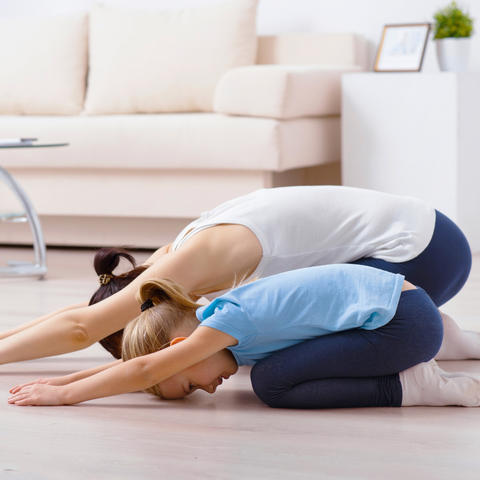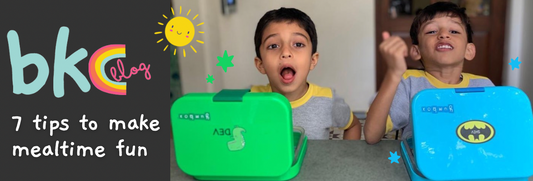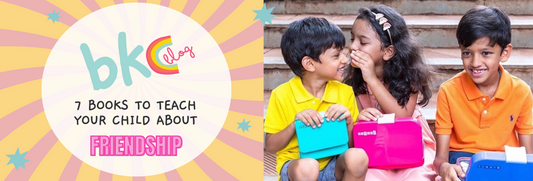The benefits of yoga should come as no surprise to anyone. Usually though it is recommended as part of physical or emotional therapy for adults. But have you ever considered introducing your child to yoga to help them yield the same benefits? Here’s why you should…

You know what they say about starting ‘em young! When it comes to life-long habits, your child has a higher chance of successfully making them a part of their daily life as an adult if they start young. As a parent you may have concerns about introducing exercises that may be too advanced for your child. Will it cause injury? Will it be too demotivating?
Well, the great thing about yoga is that it can be modified to suit any age, body type, or fitness level. Yoga is truly for everyone. You don’t have to wait to reach a certain level of flexibility to practise yoga. You can simply modify it to suit you! There’s yoga that is suitable for a five-year-old first grader, a 25-year-old athlete, or a 70-year-old retired person.

Plus, getting started early means your child will yield its many benefits from a young age. And without a doubt, the benefits are varied and plenty!
Benefits of Yoga for Children
Mindfulness & Focus
To practice yoga asanas one has to find a posture and then focus on holding it for a length of time. This requires being fully present and mindful of your body. With asana practice, your child will learn how to clear their mind of intrusive thoughts and single-mindedly focus on the task at hand – a great skill that will help them concentrate better at schoolwork as well.

One of the most foundational and accessible practices in yoga are breathing exercises. As basic as they may sound to the uninitiated, these breathing exercises are greatly beneficial for the mind and body. Teaching your child pranayama will help them learn a useful meditation technique. Whenever your child may be feeling restless or impatient, perhaps before they sit down for homework, encourage them to spend a couple of minutes breathing mindfully.
Mobility & Strength
Normally flexibility isn’t something that your child would have to worry about at their age. However, it’s never too early to channel that inherent flexibility into mobility exercises that will benefit them well into their adulthood. Yoga asanas seamlessly combine strength and mobility in a way that will help your child become aware of their body and muscle groups.

Given that children nowadays spend a lot of their time being sedentary in front of screens, it is important to encourage them to practise exercises that incorporate fluid movements. It will also hold them in good stead as they try various sports, not only helping them perform better but also preventing injuries.
Balance & Coordination
No doubt your child would have already tried some balancing poses even as part of playing games like hopscotch. Balance-based asanas are fun and challenging at the same time, which is why they also feel tremendously rewarding when you succeed at them. If your child is interested in dance, they will greatly benefit from practising asanas that need coordination. They will learn how to control their movements with precision and grace.

Getting a balancing pose right requires a combination of strength, focus, and coordination. It is important, however, to encourage your child to take it slow. Progress often takes patience; with practising balance-driven asanas, your child will build determination and resilience, and also learn via lived experience that rewards come with hard work. Surely, a valuable lesson for a person of any age!
Better Mental Health
Most people who practise yoga will tell you that one of the best things about it is how you feel after completing a session. Research shows that you feel calmer, more relaxed, and even energised, instead of feeling knackered out after a tiring gym session. There is a reason why it’s used to treat anxiety conditions, depression, insomnia, and more. Now imagine teaching your child the tools to tackle the pressures of teenage and adult life without them even realising!

Yoga’s measured pace will help your child to slow down, focus on the present moment, breathe deeply, and learn to take things as they come. Growing up at a time when they’re constantly bombarded with information from all around, yoga can become a great coping mechanism. Besides that, the strength, mobility, and coordination they will gain, will make them more confident, patient, and resilient individuals who will understand how hard work feeds into progress.
How to Initiate Your Child into Yoga Practice
Let’s begin!
-
Talk to your child about yoga and its benefits. You can use this book to initiate a conversation.
-
Practise it with your child. Children learn best with imitation. It will also be a great opportunity to bond with your child and get some exercise yourself! Eventually you can sign your child up for suitable online or offline classes, whichever works out best for you.

-
Before you get started, keep a full water bottle and a towel handy. It will teach your child the importance of carrying water with them when going out for playtime.
-
A good quality yoga mat, or any surface that is firm, offers grip, but also provides some cushioning would work well. Perhaps invest in a large mat that accommodates both of you but also doubles up as a playmat.
Six Asanas for Young Kids
1. Breath Work
Most of us are upper-chest, shallow breathers, never allowing the air to reach our diaphragms. Guide your child to begin their yoga practice with some deep, calming breaths.
-
Begin by placing one hand on your upper chest and the other above your stomach.
-
Close your eyes and focus as you breathe in through your nose, feel your chest expand, and then your diaphragm. Hold your breath for the count of five.
-
When breathing out, consciously contract your diaphragm, then your chest, and release your breath through your nostrils.
You can mix it up by trying some other child-friendly breathing exercises.
2. Vrikshasana or Tree Pose
Here’s a great balancing exercise to begin with! The tree pose is challenging yet accessible enough for beginners to try without feeling too intimidated. It improves focus, balance, and control.

-
Stand at ease on your mat, with your arms on either side.
-
Lift one foot up and use your hand to place it firmly on your shin or thigh, whichever feels comfortable.
-
Lock your gaze on a point ahead of you and slowly lift your arms up over your head.
-
Try and hold for five deep breaths. Keep stretching upwards like a tall tree!
-
Release your arms and lifted leg, and repeat on the opposite side.
3. Virabhadrasana or Warrior II
How about an asana that will help your child feel strong and confident? That’s exactly what Warrior II does, while also strengthening your legs, opening your chest and lungs, and stretching your hips and groin.

-
Stand at ease on your mat, with your arms on either side.
-
Take one leg back and ground your foot so it’s perpendicular to the foot that is facing the front. If possible, keep the knee of that leg straight.
-
Now slowly bend the knee of the leg facing forward.
-
Raise both your arms and hold them parallel to the ground, one facing forward, while the other facing back.
-
While keeping your body facing to the side, look straight ahead along the arm you are holding up in front of you.
-
Ground your feet, stay strong, and hold for five deep breaths.
-
Release your arms and legs, and repeat on the opposite side.
4. Paschimottanasana or Seated Forward Fold
How much time do you spend hunched over a screen? Probably too much! Given that even children spend so much time hunched over their desks or screens, it’s important to elongate the spine every chance we can give them!

-
Sit on your mat with your legs straight out in front of you, and your toes pointing up.
-
Make sure you are seated on your tailbone with your arms on either side.
-
Inhale, take your arms straight up over your head, and then as you exhale, fold over to reach your feet.
-
When folding, make sure that you start from the hip, instead of hunching your shoulders and overstretching your upper back.
-
If you need to maintain a microbend in your knees, do so.
-
Hold for five deep breaths, and then gently release and straighten yourself from your hip.
5. Ustrasana or Camel Pose
Now since we have stretched out our spine one way, it’s time to balance that with a counter pose! The camel pose is a wonderful heart-opening backbend that helps ease a lot of the tension that we hold in our chests and shoulders. It helps undo the damage from the aforementioned hunching.

-
Kneel on your mat with your legs shoulder-width apart.
-
Now stand on your knees with your arms held out in front of you.
-
Gently rotate your arms so they go over your head and help you reach backwards.
-
As you are circling your arms, slowly bend back from your hips.
-
Reach your arms out towards your ankles and hold them.
-
Gently arch your upper back and open your chest as much as you can.
-
Hold for five deep breaths, and then gently release by slowly rotating your arms the other way and coming back to face the front.
6. Balasana or Child’s Pose
Aptly named, this one is a relaxing pose that your child will love! It’s also a wonderful asana to use as a calming technique when your child is feeling anxious and stressed. It increases flexibility in the hips, legs, and ankles, and feels like a warm, comforting hug.

-
Kneel on your mat with your legs shoulder-width apart.
-
Sit back on your heels, and bring your arms in front of you by rotating them from your shoulders.
-
As you bring your arms over your head, gently lower yourself into the mat with your arms stretched out long in front of you.
-
You can rest your forehead or chin on your mat.
-
Hold for five deep breaths, and then come back up by slowly rotating your arms the other way.
Ask your child how they feel after the practice. Share how you feel. Be open and vulnerable about what you found challenging and what felt easy and enjoyable for your body. This will help your child open up and welcome them to share how they feel as well. Assure them that it’s perfectly fine if they could not get something right, and that they will get better each time they try the asanas.
The little steps they take today towards making yoga or any healthy practice a part of their daily routine will pay rich dividends in the years ahead.





